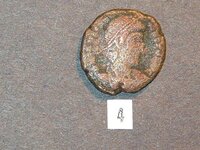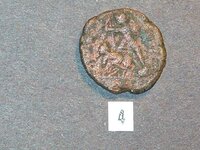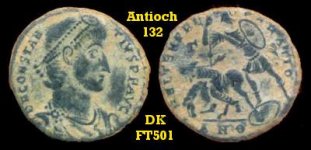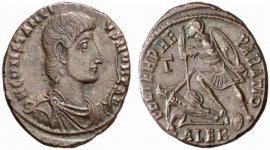- Nov 19, 2006
- 14,839
- 12,464
- Detector(s) used
- Garrett Fortune Hunter, White's CoinMaster, Garrett American S3, Compass Coin Magnum and a couple of others you will only find in museums!
- Primary Interest:
- All Treasure Hunting
Here's another ancient that I can't ID. It is about 2cm in diameter.
Any help is appreciated.
Thanks.
Scott
Any help is appreciated.
Thanks.
Scott








 . I still think it is a half-centenionalis as the full ones (Centenionalii) are anywhere from 21-26 mm in my experience (not oblonged). By the way, for terminology's sake, a half centenionalis is the same thing as an "AE3". Also, the coin is definitely Constantius II as Constantius Gallus is never portrayed on these types diademed (Gallus is always bare-headed).
. I still think it is a half-centenionalis as the full ones (Centenionalii) are anywhere from 21-26 mm in my experience (not oblonged). By the way, for terminology's sake, a half centenionalis is the same thing as an "AE3". Also, the coin is definitely Constantius II as Constantius Gallus is never portrayed on these types diademed (Gallus is always bare-headed). 




